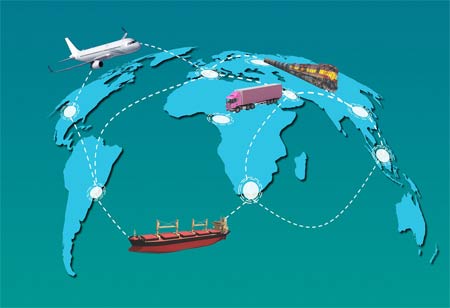THANK YOU FOR SUBSCRIBING
THANK YOU FOR SUBSCRIBING

By
Logistics Transportation Review | Friday, September 06, 2024
Stay ahead of the industry with exclusive feature stories on the top companies, expert insights and the latest news delivered straight to your inbox. Subscribe today.
Freight damage in LTL and FTL shipping, particularly in Europe, can be minimised through proper packaging, thorough inspections, carrier selection, route planning, temperature control, insurance, advanced technology, staff training, and continuous process improvement.
FREMONT, CA: LTL (Less Than Truckload) and FTL (Full Truckload) shipping, though efficient and cost-effective, present certain risks. Freight damage remains a prevalent issue, affecting both shippers and carriers alike. In Europe, the region's diverse transportation infrastructure and fluctuating weather conditions further exacerbate the potential for damage.
To effectively mitigate the risk of freight damage in LTL and FTL shipments across Europe, adopting a range of best practices is essential. Proper packaging plays a crucial role in this process. High-quality materials should be used to withstand the rigours of transportation, ensuring that items are securely packed to prevent movement and potential damage. Additionally, clear labelling of packages with indicators for fragile or hazardous materials is essential for handling.
Thorough inspection of goods before shipment is another critical step. Comprehensive pre-shipment checks can identify potential damage while tracking systems should be employed to monitor shipments in transit and detect issues early. Carrier selection is also vital; choosing carriers with a proven track record and verifying that they possess adequate insurance coverage can safeguard against potential losses.
Route planning should include a detailed risk assessment, considering weather conditions and road hazards. Considering alternative routes can help mitigate these risks. Appropriate refrigeration or heating during transit is necessary for temperature-sensitive goods, along with monitoring devices to track conditions throughout the journey.
Maintaining detailed documentation of shipments, including packaging, loading, and delivery records, is essential. Complaints for damage or loss should be filed promptly, supported by comprehensive documentation. Additionally, exploring additional insurance coverage beyond the carrier’s insurance can provide further protection against unforeseen losses.
Technology solutions can enhance risk management. IoT sensors can monitor shipment conditions, including temperature, humidity, and shock, while predictive analytics can help proactively identify and address potential risks. Training and education are also necessary; employees involved in shipping and receiving should receive thorough training, and carriers should provide their drivers with safe handling practice training.
Continuous improvement is vital to effective risk management. Regular assessments of risks and process adjustments should be made, with feedback loops established with carriers and customers to identify areas for enhancement. By implementing these best practices, organisations can significantly reduce the risk of freight damage and enhance supply chain efficiency across Europe. Additional considerations include adherence to specific customs regulations, awareness of infrastructure challenges, and the potential impact of Brexit on shipments.
Minimising freight damage in LTL and FTL shipping across Europe requires a comprehensive strategy. By adopting best practices such as proper packaging, thorough inspections, careful carrier selection, precise route planning, temperature control, accurate documentation, adequate insurance coverage, advanced technology solutions, staff training, and continuous process improvement, organisations can significantly reduce the risk of damage and enhance supply chain efficiency.
I agree We use cookies on this website to enhance your user experience. By clicking any link on this page you are giving your consent for us to set cookies. More info





